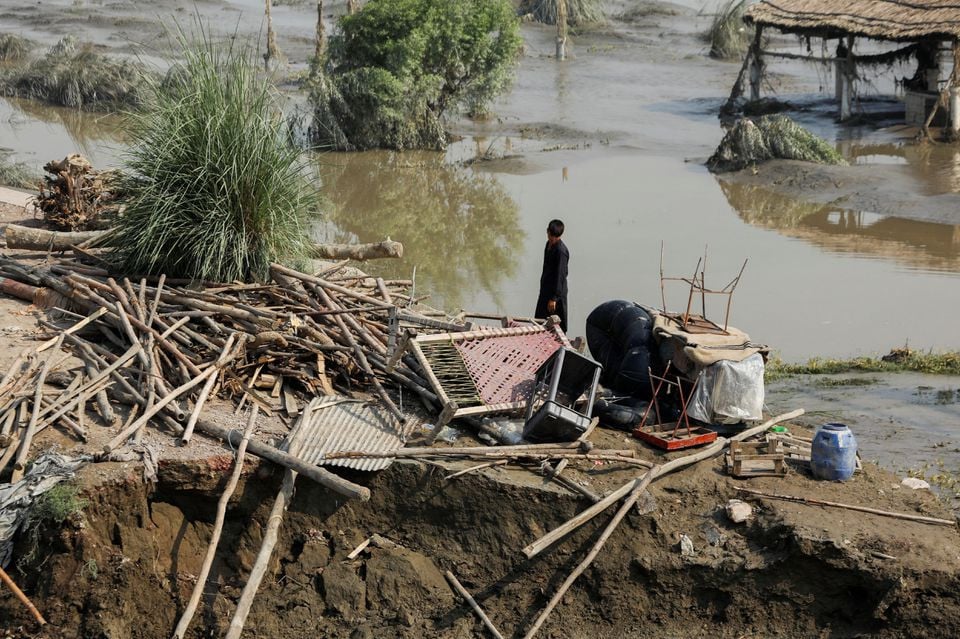
Insured losses from floods doubled to $80 billion globally during 2011-2020 compared to the previous decade, while insurance penetration lingered at just 18%, according to Swiss Re Institute's economic insights report focused on floods.
Climate change has led to an increased likelihood of high-intensity heavy rains and short-duration floods events as well as higher flood-related losses as a consequence, but insurance coverage has remained dangerously low.
This year heavy rains have triggered floods that inundated cities in China and South Korea and disrupted water and electricity supply in India, while drought has put farmers' harvests at risk across Europe.
Torrential rains and flooding have also submerged a third of Pakistan. The United Nations appealed for aid for the country this week for what it described as an "unprecedented climate catastrophe."
Read more: Sindh braces for surge of flood water flowing from northern areas
The United States too has faced floods in recent weeks and months, including in Kentucky and Texas. Such events highlight the insurance gap.
"The recent events in Kentucky, Mississippi and Texas are a sad reminder of how devastating floods can be to our lives," Keith Wolfe, president US P&C, Swiss Re (SRENH.S), told Reuters.
"Despite the private flood insurance market gaining traction over the last few years, too many people are still not covered for flooding and the majority of those impacted by these events are uninsured, leaving them to pick up the pieces at their own expense."
The potential for insurance cover to grow is huge, according to Swiss Re. Nearly 40% of the US population lives in coastal counties and 10% in floodplains.
Better data and sophisticated risk mapping and modeling are enabling more accurate quantification of flood risk and creating scope for growth of the private sector flood insurance market, the report said.

1725443747-0/Untitled-design-(5)1725443747-0-165x106.webp)


1724238420-0/Untitled-design-(3)1724238420-0-165x106.webp)
1728886577-0/trump-(15)1728886577-0-270x192.webp)














COMMENTS
Comments are moderated and generally will be posted if they are on-topic and not abusive.
For more information, please see our Comments FAQ